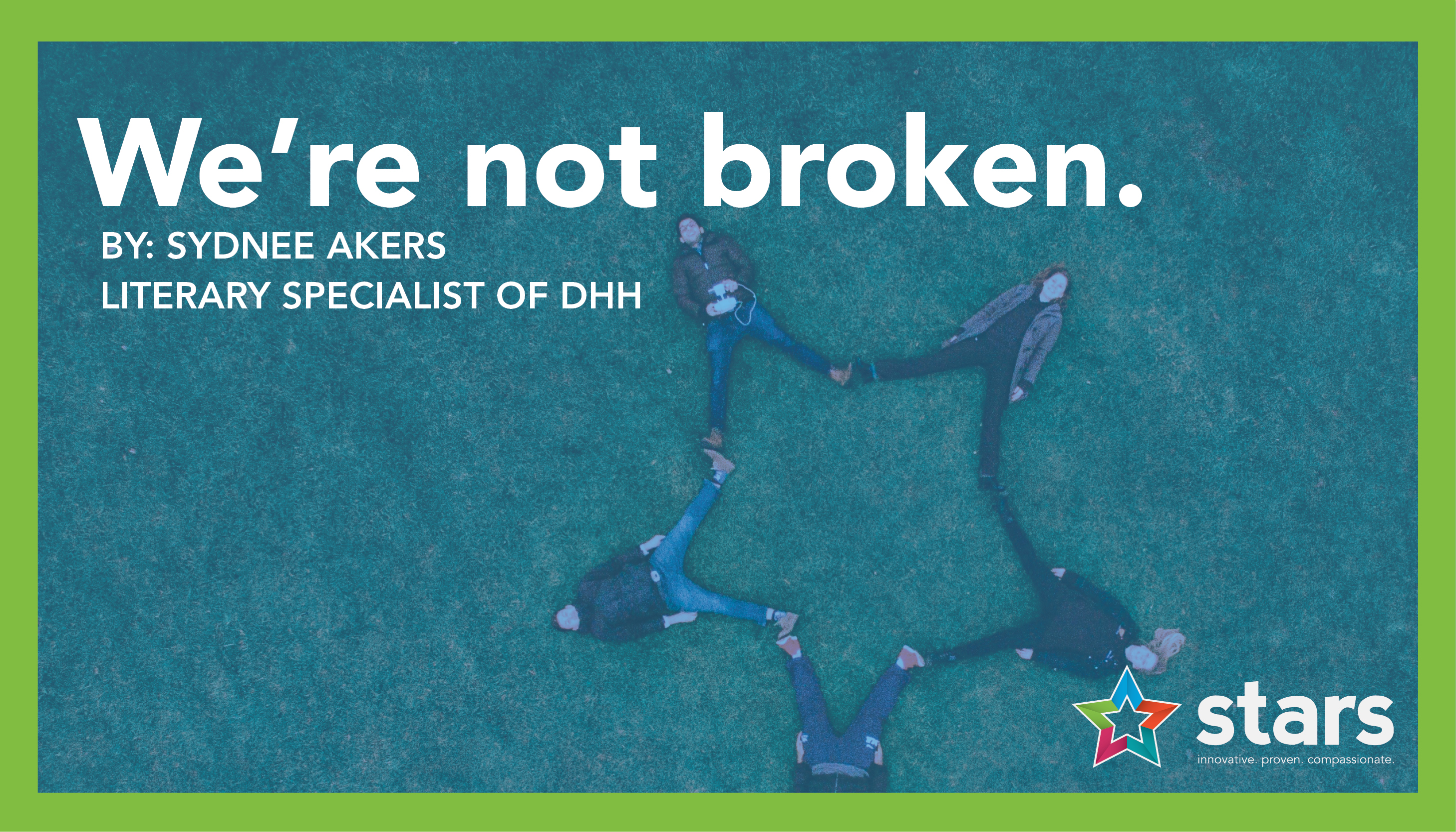Webster’s dictionary defines deaf as: “lacking or deficient in the sense of hearing.”
We’re not broken.
What people may not know is, behind the meaning of the word “deaf,” is a beautiful and rich culture, complete with its own traditions, language and people. “Deaf” may be seen as a negative occurrence because hearing loss, or hearing impairment, is often seen as disabled.
As a community, we believe the complete opposite. People who are deaf do not see themselves as broken or as a disability. We believe we do not need to be fixed because we are immersed in an amazing culture that has shaped our identities and given us a way to express ourselves. We do need to be respected.
Being deaf is part of our identity.
Just as the hearing community is made up of unique individuals, the Deaf community is, as well. Not all people who are deaf use sign language, there are people who are deaf who can speak or can use both voice and sign. Some people who are deaf go to deaf institutions while others go to public schools with an interpreter. People who are deaf might use hearing aids, have cochlear implants or not have any hearing assistance at all. Each person is an individual and unique in their own way, just like a person in the hearing community.
The definition of deaf is much more appropriate to use when describing someone who is older and who is losing their hearing. These people usually are not involved with the Deaf community and do not know Deaf culture or the language. One of our goals is to expand hearing people’s perspective of people who are deaf. Being deaf does not mean you are broken. Deaf individuals are just as capable as hearing individuals.
Being deaf is an identity.
Communication is just as essential for someone who is deaf. Remember communication is not dependent on one’s ability to hear; it’s on one’s ability to receive information and express oneself.
The majority of communication is nonverbal, nonverbal communication involves actions, body language, gestures and facial expressions. Deaf culture depends fully on visuals and gestures, better known as American Sign Language.
American Sign Language (ASL) is a complete, grammatically complex language; it is NOT the same as the English language. Just like someone who is hearing would not say, Chinese is the same as English. As mentioned earlier, methods of communications for the deaf can include either speech, sign language, or both. When a person tells you they are deaf, do not panic or run away. If they speak to you, speak normally and face to face. If they use paper and pen or a phone to communicate, write back. If you know some sign language, do not be afraid to use it. People who are deaf can be patient and willing to help you learn sign language. Deaf people will appreciate your efforts to communicate with them in a way that is not normal for hearing people. Lastly, please ask questions, no matter how silly it may seem. It’s better to educate yourself then to assume.
Here’s a much better definition of deaf, provided by Gallaudet
If you feel so inclined to learn some sign, check out our Deaf Teaching Hearing Series on YouTube.
Help STARS continue our vital work by becoming a monthly donor or making a one-time donation.
Stay Connected. Follow Our Social Media Channels Below.



